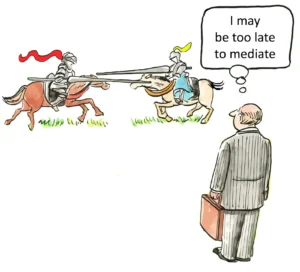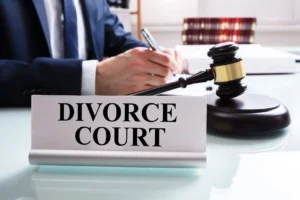Client Testimonial Videos: A Powerful Tool for Law Firms
In the competitive landscape of legal services, establishing trust and credibility with potential clients remains paramount. Client testimonial videos have emerged as one of the most effective tools for law firms seeking to differentiate themselves in a crowded marketplace. These authentic visual endorsements provide compelling social proof that can significantly impact a firm’s ability to attract and convert new clients.
The legal industry has traditionally relied on referrals and word-of-mouth marketing. However, as digital transformation reshapes client acquisition strategies, forward-thinking law firms are leveraging video testimonials to showcase their expertise and build trust at scale. These videos allow potential clients to see and hear directly from others who have experienced positive outcomes, creating an emotional connection that text-based reviews simply cannot match.
As we navigate through 2025, the importance of video content in law firm marketing continues to grow exponentially. With projections indicating that video will constitute 82% of all internet traffic this year, law firms that fail to incorporate video testimonials into their marketing strategy risk falling behind competitors who understand the power of visual social proof. This comprehensive examination explores how client testimonial videos function as a powerful tool for law firms, offering practical insights into their creation, implementation, and optimization for maximum impact.
The Psychology Behind Client Testimonial Videos
The effectiveness of client testimonial videos stems from fundamental aspects of human psychology. We are inherently social creatures, programmed to seek guidance and validation from others when making decisions. This phenomenon, known as “social proof,” leverages people’s natural desire to be part of a like-minded group and take cues from others who have faced similar situations.
When potential clients view testimonial videos, they witness real people sharing authentic experiences, which creates a powerful emotional connection. This visual and auditory evidence of client satisfaction significantly strengthens the impact of social proof compared to text-based reviews. The ability to see facial expressions, hear voice inflections, and observe body language adds layers of credibility that written testimonials cannot provide.
Research supports this psychological impact, with Nielsen studies showing that while many consumers distrust paid advertising across various media channels, approximately 70% somewhat or completely trust consumer opinions posted online. This trust gap between traditional advertising and authentic client testimonials represents a significant opportunity for law firms to build credibility through video testimonials.
Building Trust Through Authentic Client Stories
In the legal industry, where clients often face significant personal or financial challenges, trust serves as the foundation of the attorney-client relationship. Video testimonials function as powerful trust-building tools by showcasing real clients sharing their positive experiences with a law firm. This authenticity helps combat the inherent skepticism many potential clients feel when evaluating legal service providers.
Client testimonial videos humanize your law firm by putting faces to your success stories. When potential clients see others who have faced similar legal challenges and achieved favorable outcomes with your firm, they can more easily envision themselves working with you. This visual representation of success creates an emotional connection that text-based content cannot replicate.
The most effective testimonial videos capture genuine emotion and authentic experiences. Rather than scripted performances, they showcase real clients speaking candidly about their experiences, challenges, and the positive impact your legal services had on their lives. This authenticity resonates with viewers and builds the credibility necessary to convert prospects into clients.
SEO Benefits of Client Testimonial Videos
Beyond their trust-building capabilities, client testimonial videos deliver significant search engine optimization benefits for law firms. Video content has become increasingly important in search engine algorithms, with videos being 53 times more likely to appear on the first page of Google search results than text-based content. This enhanced visibility can dramatically improve a law firm’s online presence and client acquisition efforts.
Incorporating video testimonials into your website improves critical engagement metrics that search engines use to evaluate site quality. Videos increase time on page, reduce bounce rates, and improve overall user engagement—all factors that signal to search engines that your content provides value to visitors. These improved metrics can lead to higher rankings in search results, increasing your firm’s visibility to potential clients.
Video testimonials also create opportunities for additional keyword optimization through titles, descriptions, tags, and transcripts. By strategically incorporating relevant keywords related to your practice areas and client needs, you can enhance your firm’s visibility for specific search queries. This targeted approach helps attract more qualified leads who are actively seeking the legal services you provide.
Types of Effective Client Testimonial Videos
Problem-Agitation-Solution Testimonials
The Problem-Agitation-Solution (PAS) format represents one of the most persuasive approaches to client testimonial videos. This narrative structure leverages the human desire for problem resolution by first identifying a recognizable legal challenge that resonates with your target audience. The client describes their initial situation and the problems they faced before engaging your firm.
In the agitation phase, the testimonial explores the emotional and practical implications of the problem, highlighting the client’s frustration, anxiety, or uncertainty. This segment creates tension and emphasizes the significance of finding an effective solution. The emotional component of this phase helps viewers connect with the storyteller and recognize similarities to their own situations.
The solution phase showcases how your law firm resolved the client’s issues, emphasizing the positive outcomes achieved and the client’s satisfaction with the results. This structure creates a compelling narrative arc that demonstrates your firm’s ability to solve real problems for real people, making it easier for potential clients to envision similar positive outcomes for themselves.
Before & After Testimonials
Before and after testimonials provide powerful visual evidence of your law firm’s impact. This format clearly demonstrates the transformative effects of your legal services by contrasting the client’s situation before and after engaging your firm. For legal services, this might involve comparing a client’s emotional state, financial situation, or legal standing before and after your representation.
This testimonial style is particularly effective for practice areas with tangible outcomes, such as personal injury, bankruptcy, or immigration cases. By showcasing the concrete improvements in clients’ lives, these videos provide compelling evidence of your firm’s effectiveness. The visual nature of the before and after comparison creates a memorable impression that resonates with viewers.
When implementing this format, focus on authentic emotional and practical transformations rather than exaggerated claims. The genuine contrast between a client’s initial distress and subsequent relief after working with your firm creates a powerful narrative that potential clients can relate to and find inspiring.
Expert Testimonials
Expert testimonials feature professionals who have worked with your law firm in a professional capacity, such as judges, other attorneys, or industry experts. These individuals can speak to your firm’s expertise, professionalism, and effectiveness from a position of authority and knowledge. Their endorsements carry significant weight due to their professional standing and understanding of legal practice.
These testimonials build credibility by demonstrating that respected professionals within the legal community recognize your firm’s capabilities. This third-party validation from knowledgeable sources can be particularly persuasive for potential clients who value professional recognition and industry standing when selecting legal representation.
When creating expert testimonials, focus on specific aspects of your firm’s practice that the expert can authentically endorse based on their professional interactions with your team. Their insights should highlight your firm’s unique strengths and differentiators within the legal marketplace.
Legal and Ethical Considerations
When creating client testimonial videos, law firms must navigate various legal and ethical considerations to ensure compliance with professional standards. Bar association rules regarding attorney advertising vary by state and often include specific guidelines for testimonials. These rules typically prohibit false or misleading statements and may require disclaimers stating that past results do not guarantee future outcomes.
Client confidentiality represents another critical consideration. Law firms must obtain proper informed consent from clients before featuring them in testimonial videos. This consent should be documented in writing and should clearly outline how the testimonial will be used and distributed. Even with consent, firms should be careful not to disclose confidential information about the client’s case without explicit permission.
Authenticity in testimonials is not just an ethical consideration but also a legal requirement. The Federal Trade Commission (FTC) has guidelines regarding endorsements and testimonials in advertising, requiring that they reflect honest opinions and actual experiences. Misleading testimonials can result in regulatory action and damage to your firm’s reputation. Always ensure that testimonials accurately represent the client’s experience and avoid scripting responses that might compromise authenticity.
Production Best Practices
Pre-Production Planning
Effective client testimonial videos begin with thorough pre-production planning. Start by identifying clients whose stories align with your marketing objectives and who represent your ideal client profile. The most compelling testimonials come from clients who achieved significant positive outcomes and who can articulate their experience clearly and authentically.
Develop a set of open-ended questions that will guide the conversation without dictating specific responses. Questions should encourage clients to share their story in their own words, focusing on their initial problem, why they chose your firm, their experience working with you, and the outcomes achieved. This approach yields more authentic and engaging testimonials than scripted responses.
Consider the technical aspects of production, including location, equipment, and personnel. Choose a quiet, well-lit location that provides a professional backdrop without distractions. While professional equipment and expertise can enhance quality, many firms successfully create effective testimonials using high-quality smartphones and basic lighting equipment. The focus should always be on capturing authentic client stories rather than achieving perfect production values.
During the Shoot
Creating a comfortable environment for clients is essential for capturing authentic testimonials. Begin by explaining the process and helping them feel at ease. Remind them that the video will be edited, so they shouldn’t worry about making mistakes or needing multiple takes. A conversational approach often yields more natural responses than formal interviews.
Use the prepared questions as a guide, but remain flexible and follow interesting threads that emerge during the conversation. The most compelling moments in testimonials often come from spontaneous, unscripted responses. Listen actively and ask follow-up questions that encourage clients to elaborate on important points or share specific details that illustrate their experience.
Capture a variety of shots to provide options during editing. These might include wide shots showing the client in context, medium shots for the main interview, and close-ups to capture emotional reactions. B-roll footage of the client interacting with attorneys or in relevant settings can add visual interest and help illustrate the client’s story during editing.
Post-Production Considerations
https://attorneys.media/video-testimonial/Post-production represents a critical phase in creating effective testimonial videos. Edit the footage to create a concise, compelling narrative that highlights the most impactful aspects of the client’s story. While brevity is important—most effective testimonials run between 60 seconds and three minutes—prioritize preserving the authenticity and emotional impact of the client’s account.
Add professional touches such as your law firm’s branding, lower-third graphics identifying the client (with permission), and subtle background music to enhance the production value. These elements should complement rather than distract from the client’s story. Include captions or subtitles to improve accessibility and engagement, as many viewers watch videos without sound, particularly on social media platforms.
Conclude with a clear call to action that guides viewers on the next steps, whether that’s contacting your firm for a consultation, visiting your website for more information, or following your social media channels. This directive should feel like a natural extension of the testimonial rather than an abrupt shift to sales messaging.
Strategic Implementation of Testimonial Videos
Website Integration
Your law firm’s website serves as the primary platform for showcasing client testimonial videos. Strategic placement throughout your site can significantly enhance user engagement and conversion rates. The homepage represents an ideal location for featuring testimonial highlights, as it’s often the first point of contact for potential clients. These brief clips can create an immediate emotional connection and encourage further exploration of your services.
Practice area pages benefit from testimonials specific to each legal specialty. When potential clients research particular services, seeing testimonials from others who faced similar legal challenges provides relevant social proof at a critical decision-making point. This targeted approach addresses specific concerns and questions that prospects may have about particular practice areas.
Consider creating a dedicated testimonials page that houses your complete collection of client videos. This comprehensive resource allows interested prospects to explore multiple client stories, reinforcing your firm’s credibility through the volume and variety of positive experiences. Organize these testimonials by practice area or client type to help visitors find the most relevant examples for their situation.
Social Media Strategy
Social media platforms provide powerful channels for extending the reach of your testimonial videos beyond your website. Each platform requires a tailored approach to maximize engagement and effectiveness. For instance, LinkedIn serves as an excellent platform for sharing professional testimonials, particularly for B2B legal services or corporate practice areas. The platform’s professional audience responds well to substantive content that demonstrates expertise and results.
Facebook and Instagram offer opportunities to showcase the more personal and emotional aspects of client testimonials. These platforms favor authentic, relatable content that tells compelling stories. Short clips highlighting emotional moments or key outcomes can drive engagement and sharing. Instagram Stories and Reels provide additional formats for featuring brief testimonial highlights that capture attention in a crowded feed.
YouTube warrants special attention as both a hosting platform and the second-largest search engine globally. Create a dedicated testimonials playlist on your firm’s YouTube channel, optimizing each video with relevant keywords, detailed descriptions, and appropriate tags. This approach improves discoverability and provides a centralized location for your video content that can be embedded across other platforms.
Email Marketing Integration
Incorporating testimonial videos into your email marketing campaigns can significantly increase engagement and conversion rates. Welcome sequences for new subscribers should include testimonials that establish credibility early in the relationship. These videos help new contacts understand the value you provide to clients and begin building trust before direct interaction with your firm.
Practice area-specific email campaigns benefit from relevant testimonials that address the particular legal challenges faced by the target audience. For instance, emails focused on personal injury services might include testimonials from accident victims who secured favorable settlements with your firm’s help. This targeted approach demonstrates your specific expertise in addressing the recipient’s potential legal needs.
Newsletter content can regularly feature client success stories to maintain engagement with your email list. These ongoing testimonials reinforce your firm’s track record of positive outcomes and keep your services top-of-mind for subscribers who may need legal assistance in the future or know others who do. Brief video clips with links to full testimonials can drive traffic back to your website for deeper engagement.
Measuring Success and ROI
Implementing effective tracking mechanisms allows law firms to measure the impact of their testimonial videos and calculate return on investment. Key performance indicators (KPIs) for video testimonials include view counts, engagement metrics (such as watch time, likes, shares, and comments), and conversion actions (like contact form submissions or consultation requests). These metrics provide insights into how viewers interact with your content and its effectiveness in driving desired behaviors.
Attribution tracking helps connect video views to actual client acquisitions. By implementing proper tracking codes and conversion paths, you can identify which testimonials most effectively convert viewers into clients. This data enables you to refine your approach based on what resonates most strongly with your target audience. Many law firms use customer relationship management (CRM) systems to track how leads from testimonial videos progress through the client acquisition funnel.
Calculate ROI by comparing the cost of producing and promoting testimonial videos against the revenue generated from resulting client engagements. While exact attribution can be challenging, particularly with longer sales cycles common in legal services, consistent tracking over time reveals patterns that demonstrate the value of your video investment. Most law firms find that well-produced testimonials deliver significant returns through increased conversion rates and higher-value client relationships.
Overcoming Common Challenges
Finding Willing Clients
One of the primary challenges in creating client testimonial videos involves finding clients willing to appear on camera. Many clients value their privacy or have concerns about publicly discussing their legal matters. To overcome this challenge, establish a systematic approach to identifying potential testimonial candidates throughout the client relationship.
Create a process for identifying satisfied clients who might be open to providing testimonials. Train your team to recognize opportunities when clients express gratitude or satisfaction with your services. These moments provide natural openings to discuss the possibility of a testimonial. Timing these requests appropriately—typically after a successful case conclusion when positive sentiment is highest—increases the likelihood of agreement.
Offer incentives that provide value to clients without violating ethical guidelines. These might include professional photography sessions they can use for their own purposes, feature stories in your firm’s newsletter, or charitable donations in their name. Always ensure that any incentives comply with bar association rules regarding client testimonials and do not compromise the authenticity of the testimonial.
Maintaining Authenticity
Balancing professional production quality with authentic client expressions represents another significant challenge. Overly polished testimonials may appear scripted or inauthentic, undermining their credibility. Conversely, completely unstructured testimonials might fail to communicate key messages effectively. Finding the right balance requires thoughtful preparation and skilled facilitation.
Prepare clients without scripting them by discussing the general topics you’d like to cover while emphasizing that you want their genuine thoughts and experiences. Provide guidance on key points without dictating specific language. This approach helps clients organize their thoughts while preserving the authenticity of their expression. Consider conducting pre-interviews to help clients become comfortable discussing their experience before filming.
Create a relaxed filming environment that helps clients feel at ease. Choose comfortable settings, limit the number of people present during filming, and allow sufficient time to avoid rushing. An experienced interviewer who can establish rapport and ask questions conversationally often elicits more natural responses than formal questioning. Remember that authenticity resonates more strongly with viewers than polished perfection.
Compliance with Bar Rules
Navigating the varying rules of state bar associations regarding attorney advertising presents a significant challenge for law firms creating testimonial videos. These rules often include specific requirements for disclaimers, prohibitions against certain claims, and guidelines regarding the representation of typical results. Failure to comply with these regulations can result in disciplinary action.
Conduct thorough research on the specific rules governing attorney advertising in your jurisdiction before creating testimonial videos. Many state bars have published guidelines or ethics opinions specifically addressing testimonials and endorsements. When practicing in multiple jurisdictions, ensure compliance with the rules in each state where the testimonials will be viewed.
Implement appropriate disclaimers based on your jurisdiction’s requirements. These typically include statements that past results do not guarantee future outcomes and that testimonials represent individual experiences rather than typical results. Ensure these disclaimers are clearly visible and meet any specific requirements regarding size, duration, or placement. Consider having an ethics attorney review your testimonial videos before publication to ensure compliance with all applicable rules.
Future Trends in Legal Testimonial Videos
AI and Personalization
Artificial intelligence is transforming how law firms create and distribute client testimonial videos. AI-powered analytics can identify which testimonial elements resonate most strongly with specific audience segments, enabling more targeted and effective video distribution. These insights allow firms to match particular client stories with the prospects most likely to find them relevant and compelling.
Personalized video experiences represent an emerging trend with significant potential for legal marketing. Advanced systems can dynamically assemble testimonial content based on viewer characteristics or behavior, creating more relevant viewing experiences. For instance, a potential client researching divorce services might automatically see testimonials from similar demographic groups or situations, increasing the content’s relevance and impact.
AI-enhanced production tools are streamlining the creation process for testimonial videos. Automated editing systems can identify the most compelling segments from longer interviews, suggest optimal cuts, and even generate initial edits based on emotional analysis and engagement patterns. These tools reduce production time and costs while potentially improving the effectiveness of the final product.
Interactive Testimonial Experiences
Interactive video technologies are creating new possibilities for engaging potential clients through testimonial content. These advanced formats allow viewers to choose their own path through testimonial content, selecting the aspects most relevant to their specific situation. For example, a potential client might select their practice area of interest and be directed to relevant client stories, creating a more personalized and engaging experience.
Shoppable video formats, already popular in retail, are being adapted for professional services marketing. These interactive videos allow viewers to access additional information, schedule consultations, or download resources directly from within the video player. This seamless integration of testimonial content with conversion actions reduces friction in the client acquisition process and improves conversion rates.
Virtual reality and augmented reality applications represent the frontier of testimonial video evolution. These immersive technologies can create powerful emotional connections by placing viewers within client stories or allowing them to interact with testimonial content in three-dimensional space. While still emerging in legal marketing, these approaches offer compelling possibilities for firms seeking to differentiate their client testimonials in an increasingly competitive marketplace.
Short-Form Video Adaptation
The rising popularity of short-form video platforms like TikTok, Instagram Reels, and YouTube Shorts presents both challenges and opportunities for law firms. These platforms favor brief, attention-grabbing content—typically under 60 seconds—requiring adaptation of traditional testimonial formats. The trend toward shorter attention spans necessitates more concise and immediately engaging testimonial content.
Creating effective short-form testimonials requires focusing on a single powerful message or emotional moment rather than attempting to compress a complete narrative. These micro-testimonials might highlight a specific outcome, an emotional reaction, or a particularly compelling statement about the firm’s impact. When strategically designed, these brief clips can capture attention and drive viewers to longer-form content for more detailed information.
The informal, authentic aesthetic favored by short-form platforms often aligns well with testimonial content. These platforms reward genuine emotion and relatability over polished production, potentially making it easier for law firms to create effective content without extensive production resources. This trend may democratize video testimonial marketing, allowing smaller firms to compete more effectively with larger competitors who have traditionally dominated video marketing.
Conclusion
Client testimonial videos have emerged as an indispensable tool for law firms seeking to build trust, enhance visibility, and convert potential clients in an increasingly digital marketplace. Their power stems from fundamental aspects of human psychology—our inherent trust in peer recommendations and our ability to connect emotionally with visual storytelling. As video continues to dominate online content consumption, testimonials provide a strategic advantage for firms willing to invest in authentic client stories.
The multifaceted benefits of video testimonials extend beyond immediate marketing impact. They improve search engine visibility, enhance website engagement metrics, provide versatile content for multiple platforms, and deliver measurable returns on investment. When properly executed with attention to legal and ethical considerations, testimonial videos create a virtuous cycle of trust-building that supports sustainable practice growth.
As we look toward the future of legal marketing, the evolution of video testimonials will likely accelerate through technological innovation and changing consumer preferences. Firms that embrace these changes—adapting to new formats, leveraging emerging technologies, and maintaining an unwavering commitment to authentic client stories—will continue to realize the full potential of this powerful marketing tool. In an industry built on trust and reputation, there are few more effective ways to demonstrate your firm’s value than through the genuine words and emotions of satisfied clients.
Citations:
- Ultimate Guide to Video Marketing for Lawyers and Law Firms
- Top Content Marketing Trends for Law Firms in 2025
- Comprehensive SEO Guide for Lawyers and Law Firms
- Effective Strategies for Getting Client Testimonials for Law Firms
- Why Video Content is Essential for Law Firm SEO Success
- Short-Form Video Marketing Trends for Law Firms in 2025
- Creating Effective Client Testimonial Videos for Your Business
- How to Use Video Content for Legal Client Acquisition
- How to Create Compelling Testimonial Videos That Convert
- Five Key Benefits of Video Marketing for Attorneys
- Video Marketing Strategies for Attorneys and Law Firms
- Top Social Media Trends for Law Firms in 2025
- Comprehensive Guide to Content Marketing for Law Firms
- 2025 Legal Marketing Trends for Law Firms
- Legal Marketing Strategies for Law Firms in 2025
- Law Firm Website Design Trends for 2025
- Effective SEO Strategies for Law Firms
- Content Writing Best Practices for Law Firm SEO
- Comprehensive SEO Guide for Lawyers and Law Firms
- Content Strategies for Lawyer SEO Success
- Definitive Guide to SEO for Lawyers and Law Firms
- Optimizing Law Firm Websites for AI Search
- Video Marketing Strategies for Lawyers in 2025
- Client Testimonial Videos from Steinberg Law Firm
- FTC Guidelines for Consumer Reviews and Testimonials
- Creating Effective Testimonials That Build Trust and Convert
- Success Stories from FindLaw’s Lawyer Marketing Services
- How to Create Effective Client Testimonial Videos
- Does Video Marketing Actually Work for Law Firms?
- Why SEO is Critical for Lawyers and Law Firms
- Effective SEO Strategies for Lawyers and Law Firms
- Video Marketing Strategies for Lawyers and Law Firms
- The Importance of Video Blogs for Lawyers
- Top Digital Marketing Trends for Law Firms in 2025
- 13 Marketing Hacks for Law Firms in 2025
- Understanding Semantic Search Engine Optimization
- Law Firm Semantic Search and SEO Strategies
- Semantic SEO Strategies for Law Firms
- How to Create Effective Video Marketing for Lawyers




















